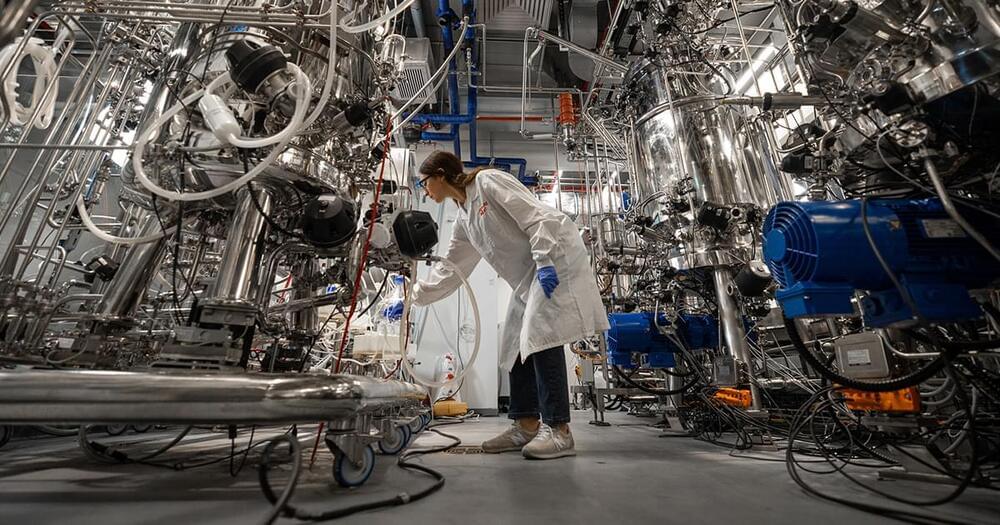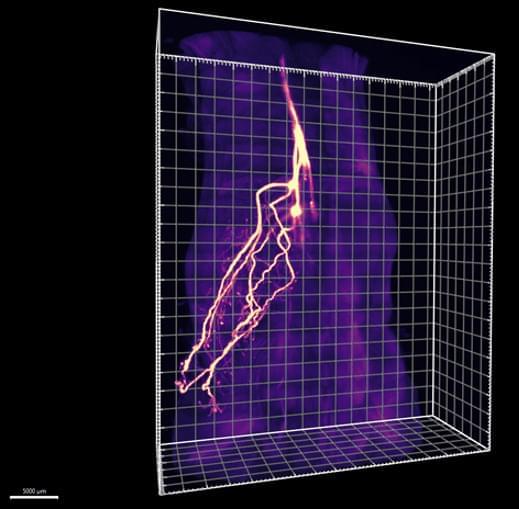That’s some repair job.
14.6 billion miles from one another, NASA engineers have found and fixed a computer glitch that had caused Voyager 1 to transmit garbled telemetry data since May.

Why was NASA’s Artemis launch date rescheduled for 3 Sep 22? Get the real skinny here.
Why was NASA’s Artemis Iaunch date rescheduled for 3 Sep 22? Get the real skinny here.
Worm-hole generators by the pound mass: https://greengregs.com/
For gardening in your Lunar habitat Galactic Gregs has teamed up with True Leaf Market to bring you a great selection of seed for your planting. Check it out: http://www.pntrac.com/t/TUJGRklGSkJGTU1IS0hCRkpIRk1K
Awesome deals for long term food supplies for those long missions to deep space (or prepping in case your spaceship crashes: See the Special Deals at My Patriot Supply: www.PrepWithGreg.com.

Israeli startup Future Meat Technologies has opened what it says is the first industrial-scale cultured meat production facility — a move designed to finally get lab-grown meat onto consumers’ plates.
“Our goal is to make cultured meat affordable for everyone,” CSO Yaakov Nahmias said in a press release, “while ensuring we produce delicious food that is both healthy and sustainable, helping to secure the future of coming generations.”
Why it matters: Demand for meat is higher than ever before, but the traditional means of producing it — by raising and slaughtering animals — is bad for the environment and arguably unethical.

The Silurian Hypothesis is not a work of science fiction. It was proposed by two scientists who posed a thought question about how would we know if a previous civilization rose and fell in Earth’s past.
Would we know the signs in geological records dating millions of years if an advanced technical civilization once existed on this planet?

Immortality exists – but to get it, you need to be a jellyfish, not a god or a vampire. Moreover, only one species of cnidarian, Turritopsis dohrnii, is known to have found the secret of eternal life. Geneticists hope comparing T. dornii’s DNA with its close relative, T. rubra, will help us understand the aging process and how to evade it.
Turritopsis are warm water jellyfish half a centimeter (0.2 inches) long. At least three species of hydra have the capacity to age backwards like Benjamin Button, going from adult to juvenile stage, before eventually growing up again. However, two of these can only go from the hydra equivalent of adolescent to child; like the victim in some uncensored fairytale, sexual reproduction locks them into adulthood. T. dohrnii, on the other hand, appears able to go from its free-floating adult stage to bottom-living polyp, known as life cycle reversal (LCR), as many times as it wants.
A paper in the journal Proceedings of the National Academy of Sciences provides a comparison of T. dorhnii and T. rubra in the hope the differences will prove enlightening, throwing in a few more distantly related types of cnidarians as well.

Summary: Newly discovered sensory neurons send information related to stress and metabolism from adipose fat tissue to the brain.
Source: Scripps Research Institute.
What did the fat say to the brain? For years, it was assumed that hormones passively floating through the blood were the way that a person’s fat—called adipose tissue—could send information related to stress and metabolism to the brain.
Scientists study the immortal jellyfish to learn about its DNA reproduction, life cycle and telomeres. New research reveals its special genes.

Some neuroscientists believe we will never solve the hard problem. Just as a goldfish will never be able to read a newspaper or write a sonnet, Homo sapiens, these scholars argue, are cognitively closed to such knowledge. It is a great but impenetrable mystery. The psychologist Steven Pinker calls the hard problem “the ultimate tease… orever beyond our conceptual grasp.” Echoing the view that consciousness remains outside the limits of human comprehension, one of the best entries in Ambrose Bierce’s The Devil’s Dictionary is the following:
“Mind, n. A mysterious form of matter secreted by the brain. Its chief activity consists in the endeavor to ascertain its own nature, the futility of the attempt being due to the fact that it has nothing but itself to know itself.”
Others believe that if we just keep solving the easy problems, the hard problem will disappear. By locating and understanding what we call the neural correlates of consciousness (NCC) — neural mechanisms that researchers say are responsible for consciousness, typically gleaned using brain scans or neurosurgery to compare conscious and unconscious states — we will march ever closer to solving the mystery, until one day there is nothing left to solve. Defining an NCC starts as a process of elimination: the spinal cord and cerebellum can be ruled out, for instance, because if both are lost to stroke or trauma, nothing happens to the victim’s consciousness. They still perceive and experience their surroundings as they did before. The best candidates for NCC (so far) are a subset of neurons in a posterior hot zone of the brain that comprises the parietal, occipital and temporal lobes of the cerebral cortex. When the posterior hot zone is electrically stimulated, as it sometimes is during surgery for brain tumors, a person will report experiencing a menagerie of thoughts, memories, sensations, visual and auditory hallucinations, and an eerie feeling of surrealism or familiarity. So if the consciousness illusion is located anywhere, it might be in this mysterious region of the posterior cortex.

The human brain is an amazing computing machine. Weighing only three pounds or so, it can process information a thousand times faster than the fastest supercomputer, store a thousand times more information than a powerful laptop, and do it all using no more energy than a 20-watt lightbulb.
Researchers are trying to replicate this success using soft, flexible organic materials that can operate like biological neurons and someday might even be able to interconnect with them. Eventually, soft “neuromorphic” computer chips could be implanted directly into the brain, allowing people to control an artificial arm or a computer monitor simply by thinking about it.
Like real neurons — but unlike conventional computer chips — these new devices can send and receive both chemical and electrical signals. “Your brain works with chemicals, with neurotransmitters like dopamine and serotonin. Our materials are able to interact electrochemically with them,” says Alberto Salleo, a materials scientist at Stanford University who wrote about the potential for organic neuromorphic devices in the 2021 Annual Review of Materials Research.
